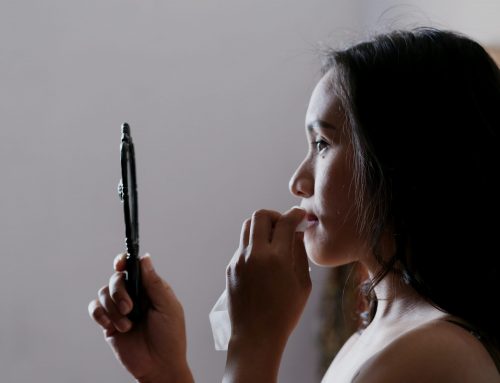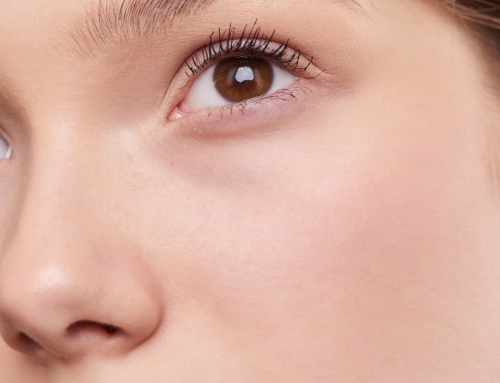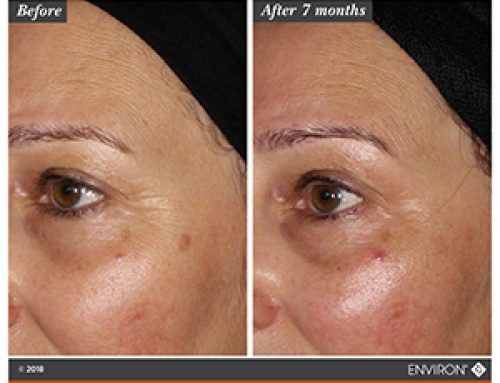What is Pigmentation or uneven skin tone?
Pigmentation or uneven skin tone, is seen as uneven brown patches on the face, hands, upper chest and shoulders. There are many names for pigmentation or uneven skin tone; sunspots, brown spots and sun damage, the official term is hyperpigmentation.
What Causes Pigmentation or uneven skin tone
What causes pigmentation or uneven skin tone? Melanin is made by cells in the skin and is the pigment responsible for your skin’s hair and eye their colour. Hyperpigmentation is caused by an increase in melanin that’s produced in special cells called melanocytes and stored in melanosomes. Then it’s transferred to keratinocytes, the skin cells to determine our skin colour. This natural pigment melanin acts as is our natural sun protection by absorbing the sun’s rays avoiding damage to cells. Despite this abnormal accumulation of melanin results in aesthetic problems.
Prolonged exposure to the sun with little or no protection to the UVA and UVB rays activates melanocytes in the skin. Melanocytes are the melanin-producing cells located in the bottom basal layer of the skin’s epidermis. Over time after excess sun exposure and often other triggers melanocytes can malfunction producing excess melanin to protect us from the sun exposure! This gradually increases causing more and more ‘damaged cells’ that gradually become visible as the melanin rises to the surface.
There are other causes of skin pigmentation apart from over exposure to UV rays however it usually plays a role, although Genetic disorders cannot be avoided.
Hormonal changes
Often called Melasma it appears as tan, brown or grey-brown patches found on the face, normally in a symmetrical pattern, on the forehead, nose and cheeks. It particularly affects women with darker skin tones. Melasma is triggered by but not caused by the sun but by hormonal triggers e.g., pregnancy or contraception pill, cosmetics including perfume and even some foods like soy milk.
Ageing and premature ageing
As the body ages, melanocyte distribution becomes less diffuse and its regulation less controlled by the body. Often linked to inflammation, however excessive sun exposure and sunbeds earlier in life will make you more prone also ageing the skin. Lentigo and age spots are more common, they are clearly defined areas often called liver spots. They do not fade in the winter months.
Inflammation and Histamine
Inflammation in the skin is triggered locally by skin diseases like eczema and systemically by chronic diseases. Some inflammatory mediators like histamine appear to stimulate melanin production, mechanisms aren’t fully understood but as histamine affects the skin barrier integrity increasing cell production but inhibiting differentiation of keratinocytes this may alter melanin transfer.
Injury or trauma
Known as Post Inflammatory Hyperpigmentation, PIH, it is caused by an injury or inflammation of the skin being exposed to sunlight. E.g from Acne and Rosacea. Normally it fades after 18 months. If as a result of a severe injury it may be permanent without treatment.
How do I get rid of pigmentation or uneven skin tone?
Because damage has been caused to the cells on the basal layer and it’s not yet possible to reverse this. We can only control the pigment. Laser, dermal abrasion, or deep peeling cannot reach these layers and in fact they may leave your skin more open to sun damage as the remove the top protective layer. Treatments that claim to ‘treat’ pigmentation cannot reverse the damaged cells only mop up the excess melanin. So, sun protection is key, a few hours in the sun will completely undo all your ‘pigmentation treatments’
There are certain skincare ingredients that can help fade dark spots or reduce the brownish patches on your face. They help in various ways by dispersing the pigment in the upper layers. Some called Alpina and Sepi White block the formation or the action of tyrosinase the enzyme crucial for melanin production. Other popular skin actives like retinol (Vitamin A) speed up natural skin cell turnover, is anti-inflammatory and protective. Vitamins C and E are know antioxidants which are anti-inflammatory. They also support collagen and skin clarity for lightening and brightening and more even-toned complexion. Niacinamide or vitamin B3 has been shown to prevent the transfer of pigment within the skin. It’s anti-inflammatory properties also reduce redness and supports hydration. Resveratrol, the polyphenol in red berries topically affects the melanocyte, reducing tyrosinase activity. Lycopene in tomatoes has skin lightening and anti-inflammatory effect!
Prevention is better than cure!
Pigmentation can be prevented and reduced simply by wearing a sun protection cream every day. Also avoiding long periods of time in direct sunlight and certainly not using sun bed! Even if hormones or genetics are factors, this will help as the sun is often a trigger. Sun damage is the main cause of hyperpigmentation. You can do a lot to prevent sun damage by applying SPF and staying out of direct sunlight. To treat darker skin pigmentation, using products that contain ingredients like retinol, vitamin c or Niacinamide can help.
Get in touch if you have any questions?
I offer free discovery calls, to discuss your options. Ranging from free with purchase skincare consultations, Packages of treatments to support skin concerns. Tailored Nutrition Consultations and Skin health Nutrition
References
- An Update of the Defensive Barrier Function of Skin [Internet]. [cited 2021 May 26]. Available from: https://www.ncbi.nlm.nih.gov/pmc/articles/PMC2688147/
- Ratz-Łyko A, Arct J. Resveratrol as an active ingredient for cosmetic and dermatological applications: a review. Vol. 21, Journal of Cosmetic and Laser Therapy. Taylor and Francis Ltd; 2019. p. 84–90.
- de Benedetto A, Yoshida T, Fridy S, Park J-ES, Kuo I-H, Beck LA, et al. Clinical Medicine Histamine and Skin Barrier: Are Histamine Antagonists Useful for the Prevention or Treatment of Atopic Dermatitis? J Clin Med [Internet]. 2015;4:741–55. Available from: www.mdpi.com/journal/jcm
- Sklar LR, Almutawa F, Lim HW, Hamzavi I. Effects of ultraviolet radiation, visible light, and infrared radiation on erythema and pigmentation: A review [Internet]. Vol. 12, Photochemical and Photobiological Sciences. Royal Society of Chemistry; 2013 [cited 2021 May 26]. p. 54–64. Available from: https://pubs.rsc.org/en/content/articlehtml/2013/pp/c2pp25152c







